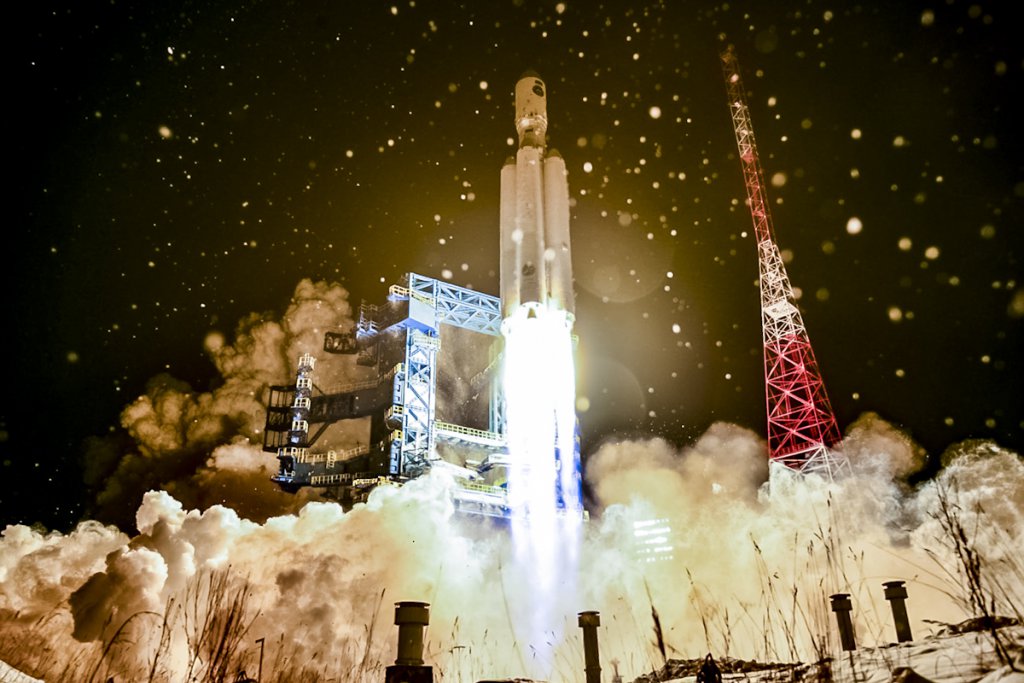Russia’s new Angara A5 launch vehicle design returned to operation after a near six year wait. Lift off occurred at 0550 GMT on 14 December 2020 from Plesetsk. After an initial parking orbit and injection into a transfer orbit, the spacecraft dummy IPM 2 (GVM 2) had a simulated release as part of a plan mimicking an all-the-way mission to GEO (Geostationary Earth Orbit), followed by an engine burn by the Breeze M to put the stage into a graveyard orbit.
The maiden flight of the Angara A5 design with its Breeze M upper stage was in December 2014. While there were some minor inaccuracies, that flight from the Plesetsk launch site in Northern Russia was more or less successful. And yet it took a further six years for this flight – again with a mass simulator – to take place. The reason? There were several bureaucratic delays in completing the next rockets on the line, meanwhile the Vostochny Cosmodrome where most Angara A5 launches were due to take place was not ready. As it is, even though Vostochny is nearing completion, this flight also took place from Plesetsk.
Comment by David Todd: Is Angara out of date before it really gets into its stride? The previous plan to cut a stage from the older Proton rocket was a bit of genius as this cut its launch price to circa US$60 million which would have made it just about competitive with the SpaceX Falcon 9. Unfortunately, this plan got cancelled in favour of carrying on with Angara A5 which is just not competitive at its launch price of US$100 million. Roscosmos is attempting to make Angara more internationally competitive by finding ways to cut its price. However, even with the possible use of reusable rocket stages, we doubt whether this will ever be achieved.









